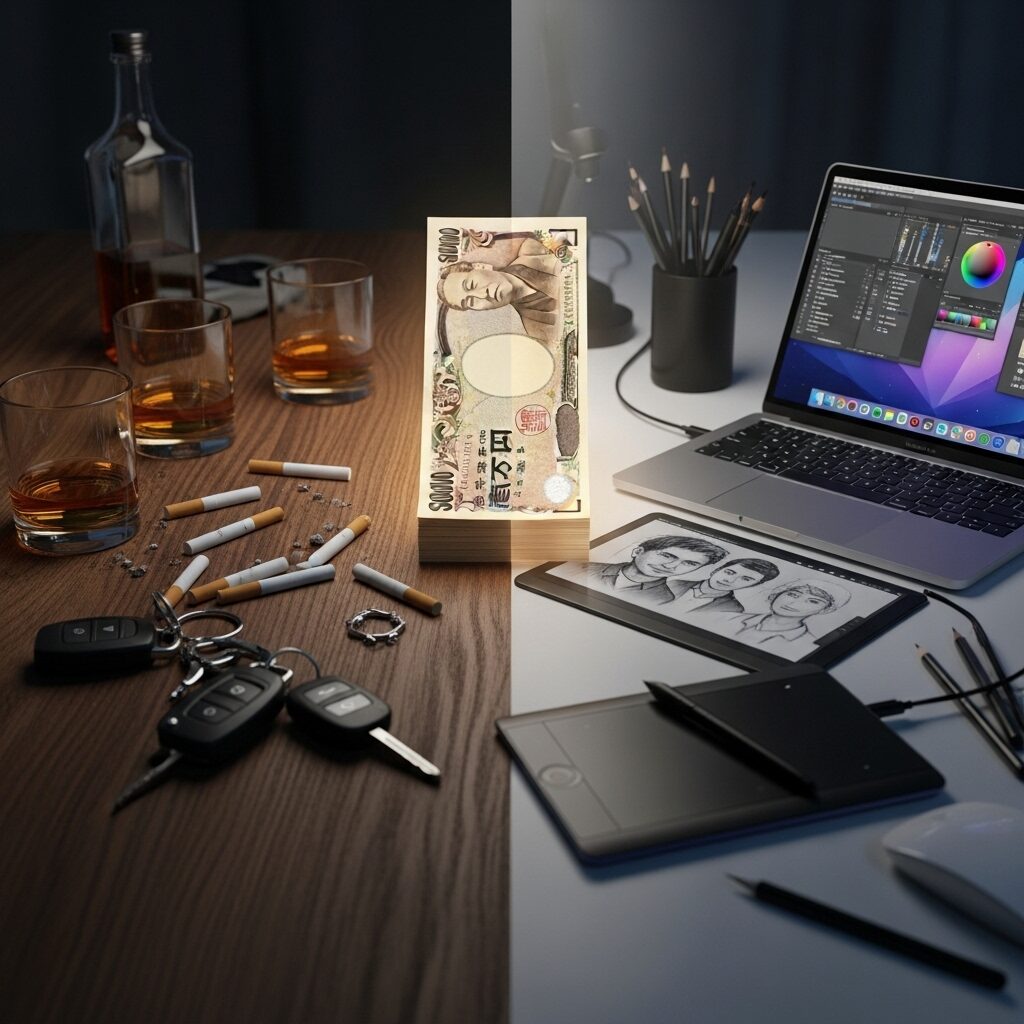── A $3,500 MacBook Pro vs. $3,500 in My Generation
📖 Estimated Reading Time: 6–7 minutes
🎯 Who Should Read This Post
✅ Parents who have been surprised by how their children spend money
✅ Those curious about the value gap between Gen Z and Japan’s Dankai Junior generation
✅ Readers interested in the line between “investment” and “wasteful spending”
✅ Anyone wondering: How would I spend $3,500?
📝 Purpose of This Article
- How my Gen Z son spends money as an “investment in his dream”
- How I, as a member of the Dankai Junior generation, once spent $3,500 defensively
- What these differences say about the way each generation lives
My Son’s Choice: A Weapon to Shape His Dream

My son works as a graphic designer at a game company.
Even after work, he sits at his desk drawing; on weekends, he keeps sketching, even preparing submissions for competitions.
“The old Mac heats up too quickly,” he said with a grin.
Fair enough—but still, a $3,500 MacBook Pro?!
Then I remembered: he has a dream of writing and illustrating children’s books one day.
That laptop isn’t just a tool. For him, it’s a weapon to shape his dream.
Where $3,500 Went: My Waste vs. His Investment

Back in my youth, $3,500 would have gone into a car, a motorbike, or simply nights of drinking and smoking—pure consumption.
My son, however, used $3,500 as an investment.
The same money, two entirely different meanings.
Gen Z Values and Work: The Company as a “Stopover”

Gen Z grew up as digital natives. They value efficiency, yet don’t hesitate to spend on what matters most—their individuality and their dreams.
“I don’t know if I’ll stay at this company forever,” my son once said.
What?! For us, just landing a job was the goal of life itself.
But his $3,500 makes sense: it’s an investment in himself.
Maybe his approach is actually the wiser one.
The Dankai Junior Struggle: Living Defensively in the “Ice Age”

For us, the story was different.
Our generation came of age during Japan’s “employment ice age.”
Jobs were scarce, competition was fierce, and survival meant grabbing any position you could find—dreams were a luxury.
Many ended up in unstable work. We didn’t have the space to ask what was truly valuable.
Conclusion: A Way of Life Reflected in Money

Today’s youth spend money on what they truly want.
They invest in value—and in doing so, they invest in life itself.
We, on the other hand, were too busy surviving.
Maybe that’s why my son’s choices shine so brightly to me.
💡 Two Faces of $3,500
- Our generation: $3,500 as defense
- His generation: $3,500 as challenge
👉 How would you spend $3,500?
🔗 Related Articles
- Only Three Pitches Left — And I Still Throw
Reflecting on how to invest limited resources — time and money — in life’s final innings.- A 50-Year-Old’s Family Budget Hack: Saving on Smartphones to Invest in the Future
A real-life example of turning “savings” into “self-investment.”- Gen Z’s Obsession with Authenticity — What on Earth Is BeReal?
Understanding how Gen Z values self-expression, efficiency, and experiences.



コメント